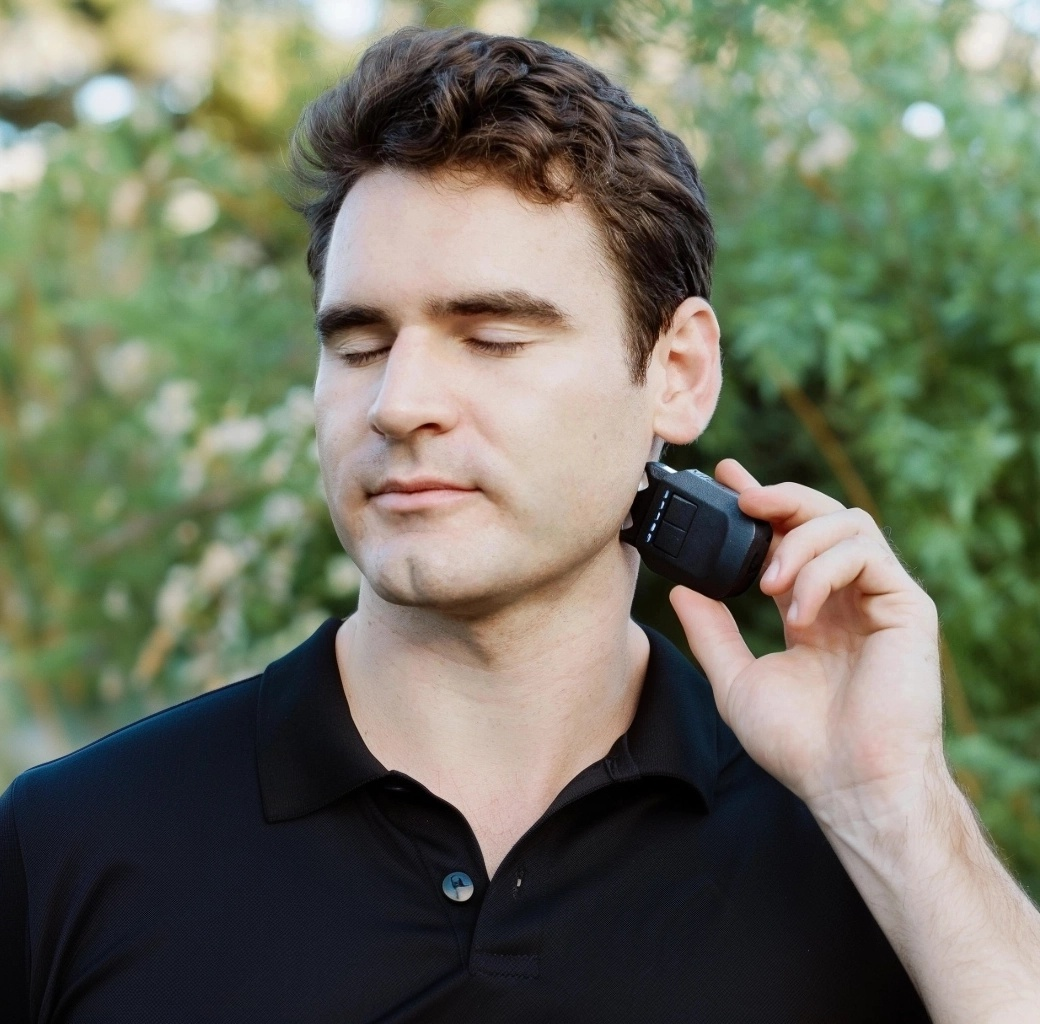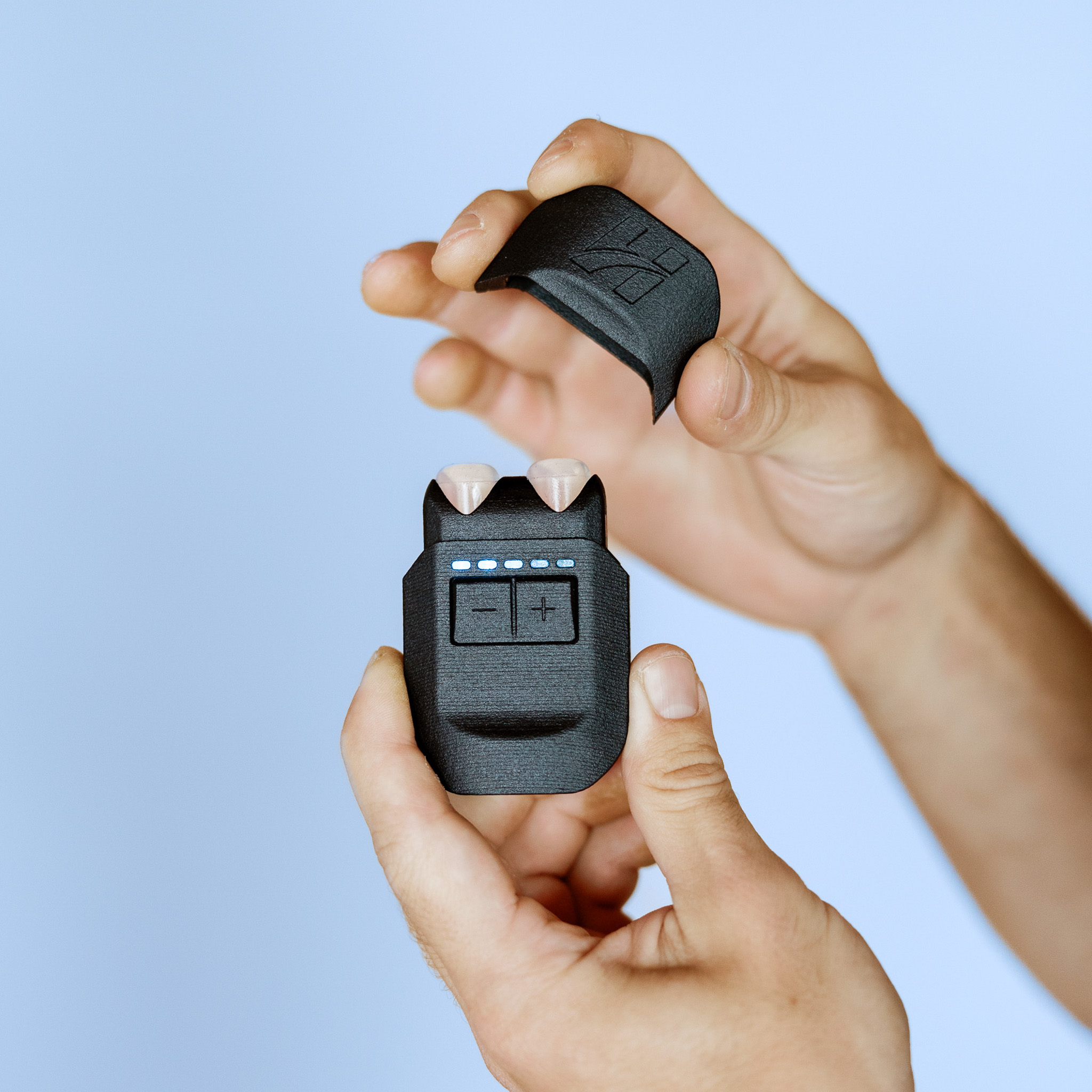SCIENCE
YOUR BODY’S BUILT-IN RESET BUTTON FOR PANIC
When panic hits, your heart races, your mind spirals, and breathing exercises just don't cut it. At these critical moments, VeRelief uses neuroscience-backed technology to engage your body’s built-in reset system—the vagus nerve—to quickly restore calm and control.
WHAT IS THE VAGUS NERVE?
The vagus nerve is your body's direct connection to calm—part of your parasympathetic nervous system, designed by nature as an emergency brake for panic and stress. It’s one of your brain’s primary tools for quickly reversing fight-or-flight mode, swiftly returning your body to safety and balance (Porges, 2009).
When you’re in a full-blown panic attack or spiraling from acute stress, your nervous system floods your body with adrenaline and cortisol. Your heart pounds, thoughts race, and breathing becomes difficult. In these moments, activating your vagus nerve is critical—it rapidly counters these responses, stabilizing your heart rate, easing breathing, and quieting your overwhelmed mind (Berthoud & Neuhuber, 2000).
VeRelief specifically targets the Auricular Branch of the Vagus Nerve (ABVN)—a powerful nerve located just beneath your ear (Peuker & Filler, 2002). Stimulating this nerve sends an immediate message to your brain’s emotional regulation centers, signaling your body that the danger has passed, allowing you to regain control—even mid-panic.


WHY TRADITIONAL TECHNIQUES FALL SHORT
Yes, breathwork, meditation, humming, and cold plunges can activate the vagus nerve—but these methods demand time, focus, and calm conditions. Exactly what you don't have during panic or intense anxiety episodes.
VeRelief bypasses this need for calm conditions, doing the work for you instantly:
No concentration required—effective even if you can’t catch your breath.
No waiting—immediate physiological relief.
Consistent results—works even when other techniques have failed you before.
When breathing fails, VeRelief works.
THE FEELING OF A REAL RESET
When you activate VeRelief, gentle electrical signals engage the ABVN and rapidly trigger a powerful physiological response, calming your nervous system in seconds. It feels like a gentle vibration, signaling immediate safety to your body—flipping your panic response OFF even when you feel entirely overwhelmed.
Here's what happens physiologically:
Your amygdala (the brain’s fear and panic center) calms down, rapidly reducing intense feelings of fear and anxiety (Kraus et al., 2007).
Stress hormones like norepinephrine and cortisol rapidly decrease, stopping the physical sensations of panic (Aston-Jones & Cohen, 2005).
Your body shifts from hyper-alertness to balanced calm, increasing heart rate variability (HRV)—a direct indicator of improved emotional resilience.
VeRelief is uniquely effective because it directly taps into your nervous system's core safety mechanism—without delay, complexity, or guesswork.


BACKED BY CLINICAL SCIENCE
The effectiveness of VeRelief isn’t theoretical—it’s proven by rigorous scientific studies:
100% of participants experiencing panic and severe anxiety symptoms reported immediate calming effects.
Clinically demonstrated 36% reduction in acute anxiety symptoms after just one use.
31% increase in HRV, showing measurable improvements in nervous system regulation.
This isn’t placebo—it’s neuroscience-backed panic relief that you can feel immediately.
BUILT FOR WHEN TIME MATTERS MOST
VeRelief isn’t just another relaxation tool—it’s designed explicitly for real, high-intensity moments of panic and spiraling stress:
When your mind starts racing uncontrollably
When you're gasping for air mid-panic
Right after sudden stressful incidents or shocks
Immediately before critical moments (public speaking, important meetings, confrontations)
Any time traditional calming methods like meditation or breathing exercises fail
It’s silent, discreet, and portable—perfect for use anywhere you need immediate relief:
No setup or apps required—just turn it on and apply
Pocket-sized for instant panic relief on-the-go
Silent and subtle—use it at work without drawing attention

REFERENCES
Aston-Jones, G., & Cohen, J. D. (2005). An integrative theory of locus coeruleus-norepinephrine function: adaptive gain and optimal performance. Annual Review of Neuroscience, 28, 403-450.
Bauer, S., Baier, H., Baumgartner, C., Bohlmann, K., Fauser, S., Graf, W., ... & Tronnier, V. (2010). Transcutaneous Vagus Nerve Stimulation (t-VNS) for treatment of drug-resistant epilepsy: a randomized, double-blind clinical trial (cMPsE02). Brain Stimulation, 3(4), 237-243.
Berthoud, H. R., & Neuhuber, W. L. (2000). Functional and chemical anatomy of the afferent vagal system. Autonomic Neuroscience, 85(1-3), 1-17.
Guyenet, P. G. (2018). The Human Vagus Nerve and the Autonomic Nervous System. In Central Regulation of Autonomic Functions (pp. 1-18). Humana Press, Cham.
Kraus, T., Hösl, K., Kiess, O., Schanze, A., Kornhuber, J., & Forster, C. (2007). BOLD fMRI deactivation of limbic and temporal brain structures and mood enhancing effect by transcutaneous vagus nerve stimulation. Journal of Neural Transmission, 114(11), 1485-1493.
Monti, J. M., & Monti, D. (2007). The involvement of dopamine in the modulation of sleep and waking. Sleep Medicine Reviews, 11(2), 113-133.
Peuker, E. T., & Filler, T. J. (2002). The nerve supply of the human auricle. Clinical Anatomy, 15(1), 35-37.
Porges, S. W. (2009). The polyvagal theory: new insights into adaptive reactions of the autonomic nervous system. Cleveland Clinic Journal of Medicine, 76(Suppl 2), S86-S90.
Subscribe to stay updated.
On our product development efforts, learn about case study opportunities, chances to win free products, and other news and insights.

